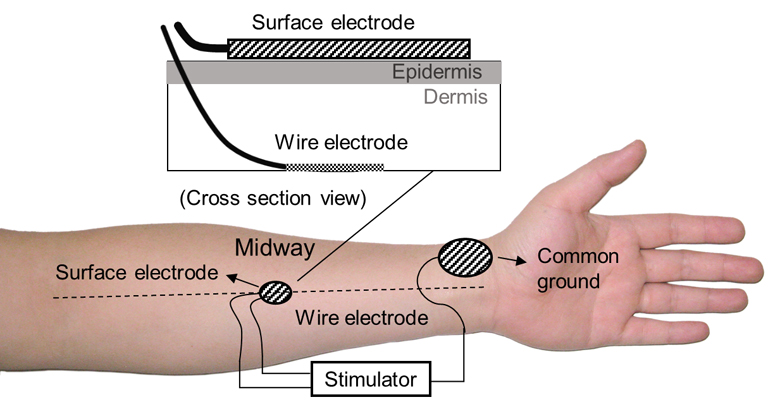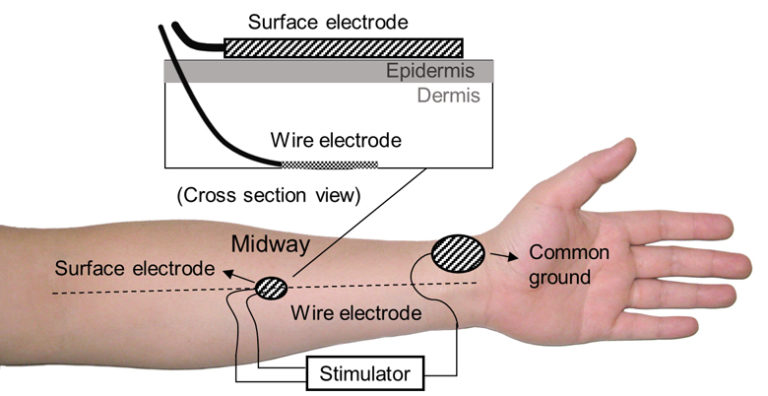
This study evaluated the psychophysical properties of subdermal electrical stimulation to investigate its feasibility in providing sensory feedback for limb prostheses. The detection threshold (DT), pain threshold (PT), just noticeable difference (JND), as well as the elicited sensation quality, comfort, intensity and location were assessed in 16 healthy volunteers during stimulation of the ventral and dorsal forearm with subdermal electrodes. Moreover, the results were compared with those obtained from transcutaneous electrical stimulation. Despite a lower DT and PT, subdermal stimulation attained a greater relative dynamic range (i.e., PT/DT) and significantly smaller JNDs for stimulation amplitude. Muscle twitches and movements were more commonly elicited by surface stimulation, especially at the higher stimulation frequencies, whereas the pinprick sensation was more often reported with subdermal stimulation. Less comfort was perceived in subdermal stimulation of the ventral forearm at the highest tested stimulation frequency of 100 Hz. In summary, subdermal electrical stimulation was demonstrated to be able to produce similar sensation quality as transcutaneous stimulation and outperformed the latter in terms of energy efficiency and sensitivity. These results suggest that stimulation through implantable subdermal electrodes may lead to an efficient and compact sensory feedback system for substituting the lost sense in amputees.

